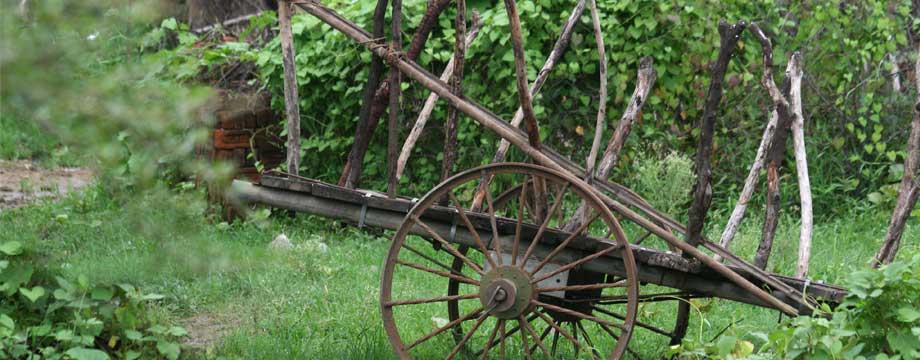Between Pakenham, Upper Beaconsfield and Upper Pakenham lies a beautiful little valley called Toomuc. With deep rich soil and permanent water this valley was an obvious choice for agriculturalists during the 19th century. Long before white settlers descended upon this area the local tribes also favoured the valley. Along the creek today you can see reminders in the form of canoe scars on some of the larger trees. The large quarry on the eastern ridge of Toomuc Valley has unearthed thousands of aboriginal artifacts, and in the Delphin Lakeside development many more have been found.
In 1841 the local squatters included included Minton (Mt Pleasant and Mt. Ararat), Bourke and Neville (Minton’s Creek) and Bathe (Garem Gam). The name Toomuc seemed to evolve from Toomah and similar sounding words. Names, sizes and leaseholders of cattle runs changed constantly and in this general vicinity we have Michael and Catherine (Kitty) Bourke on the Toomah run as per Catherine’s obituary 1911. In 1848 a lease of 13,500 acres (or 54 square kilometres) was registered by Howey and Patterson and called Toomah along the Toomah Creek, while the IYU run just to the south was situated on the Toomuc Creek. In the 1850’s the Toomah Run was leased to Robert H. Bell. In 1858, Mr. Bell fell on hard times and his interest was sold by a sherriff”s auction.
On the 11th of June, 1930, the Argus newspaper mentions the origin of the name Toomuc. According to the writer, the names Toomuc, Toomah, Tumut, Dumut, and Tomagul all mean swamp or sluggishly flowing water. As the land to the south of the Toomuc creek was swamp, this description seems pretty accurate. In the 1930’s the farmers in the Cardinia area were still trying to sort out drainage problems with the Toomuc. It is interesting to note that in 1944 an article was written by H. Hanslow, Commissioner of the State Rivers and Water Supply where he talks about population, water quality and supply and the damage to Toomuc Creek and Westerport Bay because of land clearing. Today we know that his observations were correct and landholders and Toomuc Landcare are desperately trying to correct the mistakes that have been made since white settlement.
The property known today as “Seven Oaks” between Toomuc Valley Road, Hein Road and Burglund Road was purchased in the 1880’s by John H. Kitchen. His sons John Ambrose and Theo also purchased land nearby along with a Lucy Kitchen and someone called H.H. Kitchen. The Kitchen family (Kitchen Brothers, Lever and Kitchen) were early soap and candle makers in Melbourne. John Kitchen with the help of T.H. Grant as manager made Toomuc Valley Orchards one of the largest apple orchards in Australia during that time. The property was somewhat unique in that it became quite self sufficient. There were 12 workers cottages built, barracks for single men, a managers residence, a stately homestead, coolstores and engineering workshops and a building used as a church and school house. All of this was on the 1004 acre property known worldwide as Toomuc Valley Orchards.
The manager from 1890 to 1910 was T.H. Grant. He was responsible for most of the growth and success that the orchard enjoyed. His reign was not without problems such as the little issue with Frances James in 1898 and the starling plague in 1904. After Grant left there were a number of managers including Dwyer, Pearson, Moody, Thompson and Pownceby.
The rest of Toomuc Valley benefited from the success of Toomuc Valley Orchards. Sideline businesses sprang up such as timber mills to make crates for the apples and fresh meat and vegetable hawkers. The children helped to pack the fruit for export- increasing the worker’s incomes. The roads and bridges were well maintained giving the local people greater access to the train station in Pakenham. The land in Toomuc Valley got a reputation for being fertile and this kept the property prices elevated during the crash of the 1890’s.
By the 1940’s Toomuc Valley Orchards was defunct. The apple trees were overgrown and many of the buildings had been sold off and towed away by trucks and drays. Toomuc Valley again benefited as many of the buildings found new homes on the smaller properties in the valley. The area became known as prized dairying land. Again the proximity to Melbourne markets and transport was in their favour. The water channel taking water from the Tarago Reservoir to the Beaconsfield Reservoir and then to Hastings was in place and ensured a permanent alternative water supply to the Toomuc Creek.
Hobby farms became fashionable in the 1970’s. There was room for the pony and Dad could take the train to work in the city. The Mount Pleasant horse trials (a leadup to the Olympics) were held regularly on the Purton property near the corner of Brown Road and the Toomuc Creek. The community of Toomuc Valley was again vibrant and strong. Guy Fawkes nights were held at the little hall on Leppitt Road. When the disastrous Ash Wednesday bushfires of 1983 came through, the community rallied and fought the fires. The top end of the valley was wiped out but the residents came through and rebuilt. Toomuc Valley today is still one of the loveliest areas in Victoria- but I’m prejudiced because I live here.

